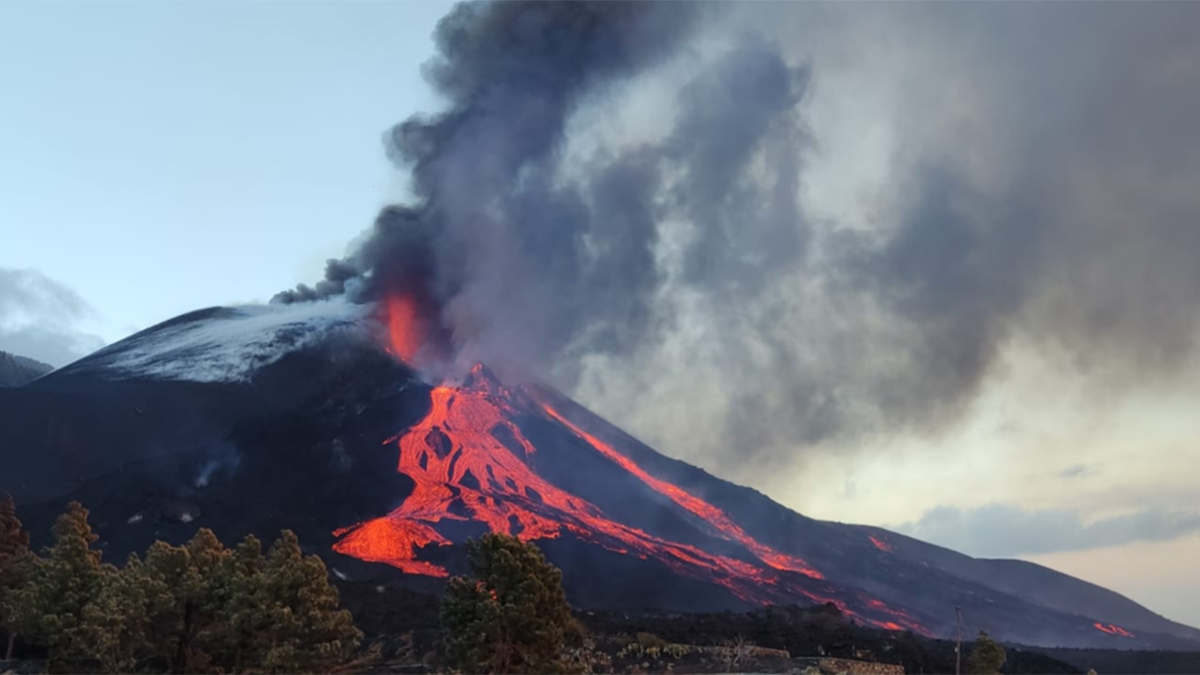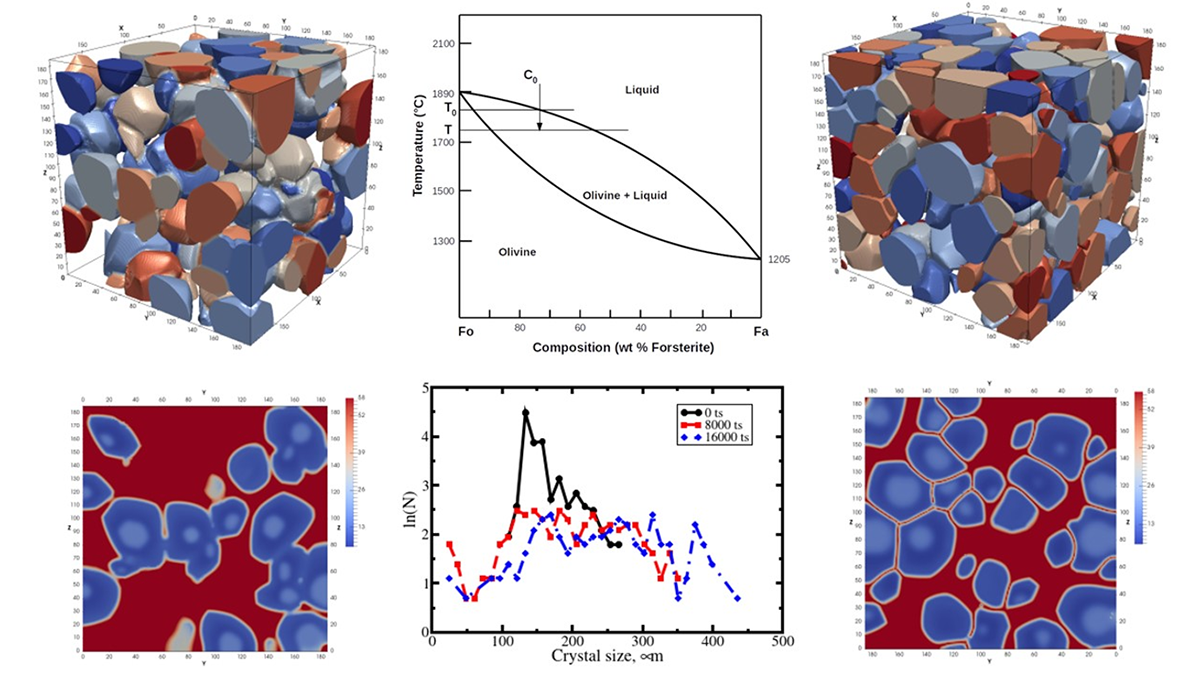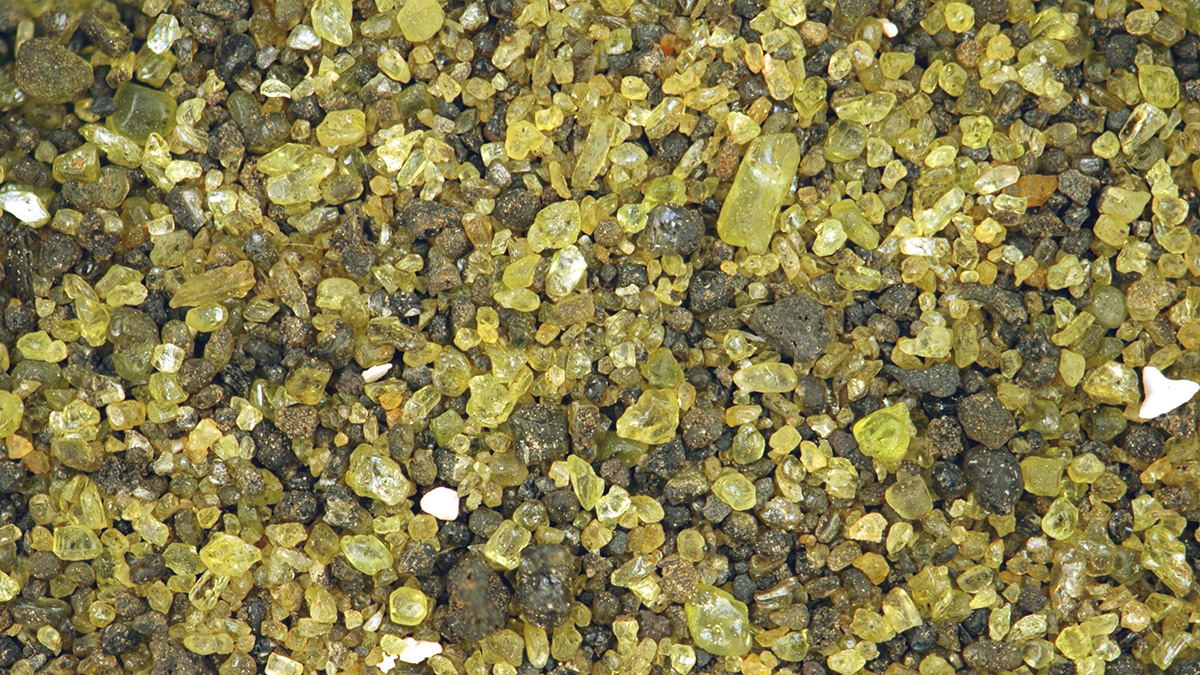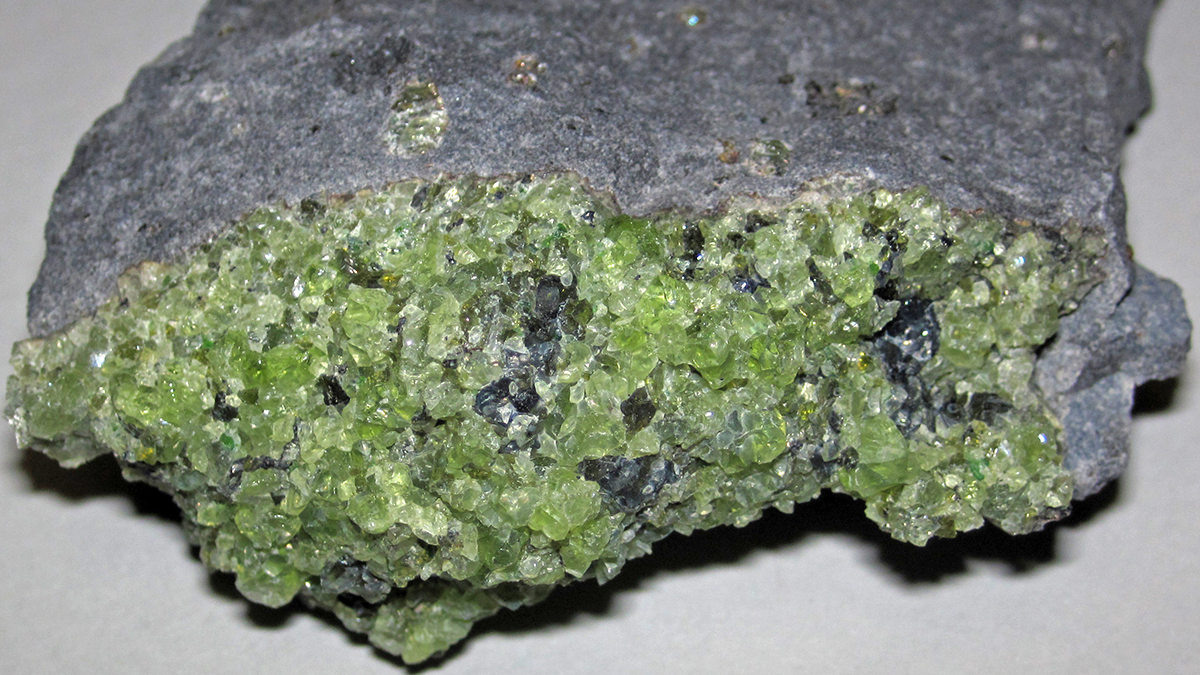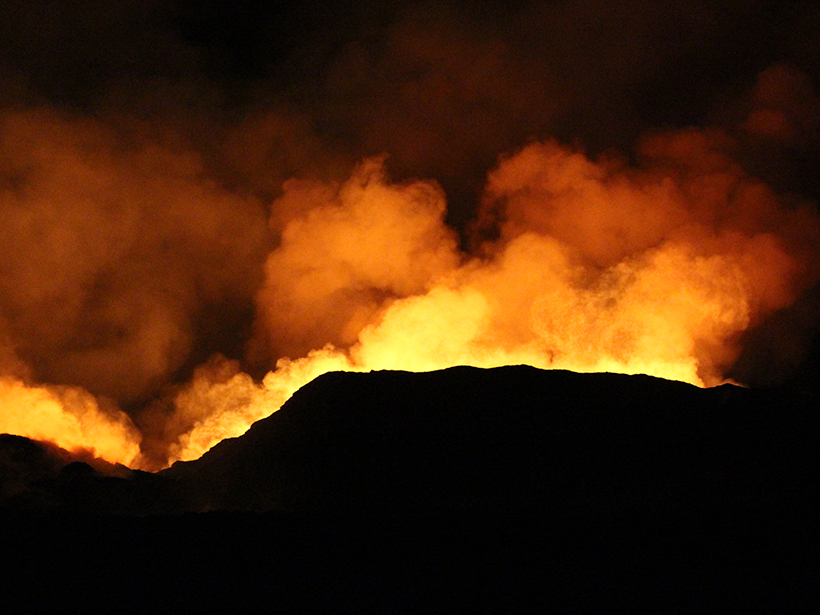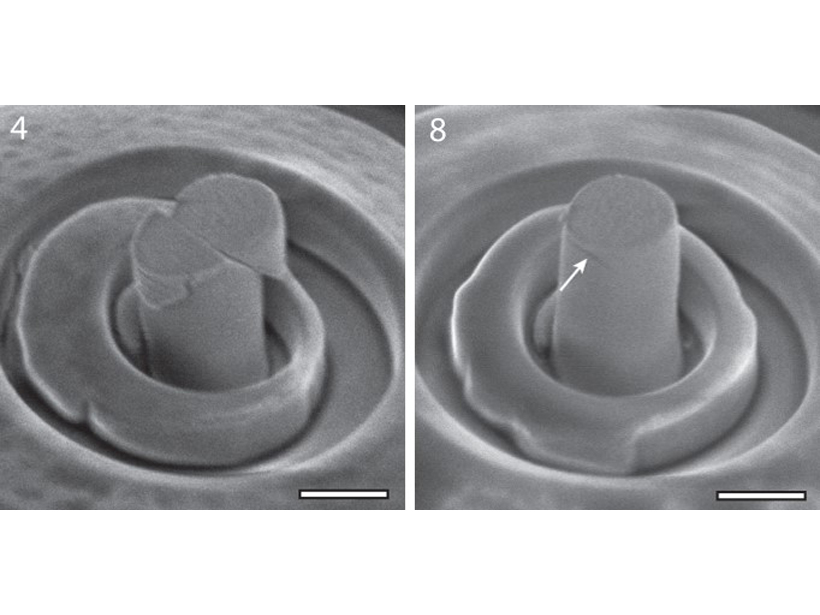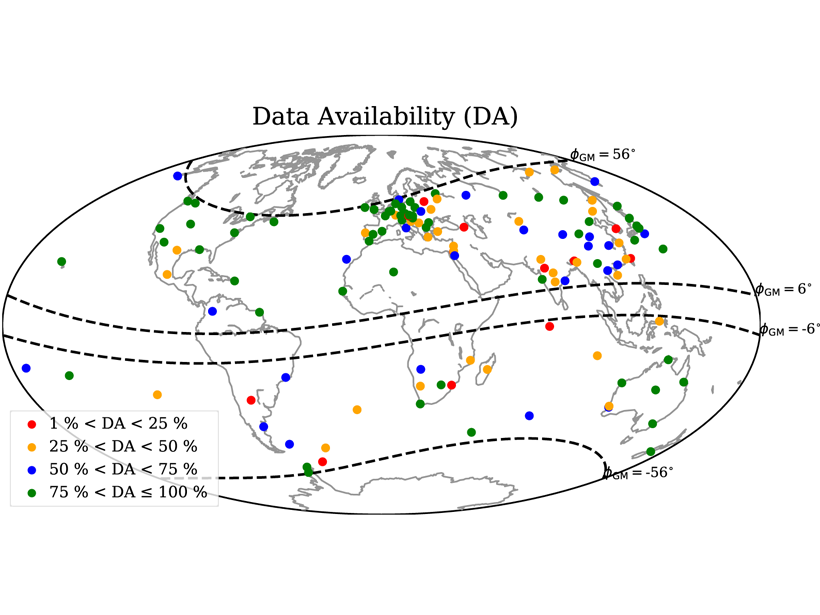Testing during the 2021 Tajogaite eruption on La Palma demonstrated the value of near-real-time petrological analyses as a supplement to seismic and geochemical data for eruption monitoring.
olivine
Olivine May Have Given Life a Jump Start
A mineral common throughout the solar system nudges a reaction that produces sugar molecules from formaldehyde.
Deciphering the History of a Rock’s Crystallization
By combining a phase field function approach with bulk thermodynamics of mineral phases, the thermal history of a rock can now be deciphered from its distribution of mineral phases.
Can These Rocks Help Rein in Climate Change?
Spreading olivine on beaches could accelerate ocean uptake of carbon dioxide and potentially limit climate change. The concept and execution still face some scrutiny from scientists.
Good News: Rocks Crack Under Pressure from Mineral CO2 Storage
When carbon mineralizes in stone, each new fracture exposes more surfaces that can react with and trap CO2, enhancing a rock’s storage capacity.
Insights from the Depths of Hawaii’s Kīlauea Volcano
One of the world’s best monitored and most active volcanos still has secrets to yield, and researchers are turning to vapor bubbles trapped in melt inclusions to find them.
Olivine Micropillars Reveal Shallow Lithosphere Rheology
Micrometer scale investigation of the rheological properties of olivine in pressure and temperature conditions corresponding to the shallow lithosphere.
Mars 2020 Team Using Australian Rocks in Search for Life on Mars
Scientists are investigating evidence of ancient terrestrial microbes preserved in Australia as well as mineral maps derived from Mars orbiter data to shed light on how to search for life on Mars.
Globally Variable Water Content in the Mantle Transition Zone
Using electromagnetic waves originating in the ionosphere and magnetosphere, conductivity profiles reaching the deep upper mantle show surprising variability in water content.
Understanding Electrical Signals from Below Earth’s Surface
A new version of a free Web application (SIGMELTS 2.0) helps Earth scientists interpret electrical anomalies in Earth’s crust and mantle and track the sources of earthquakes and volcanic eruptions.

